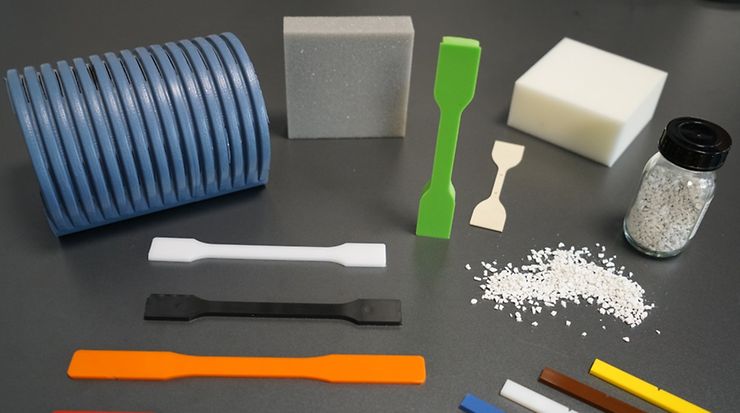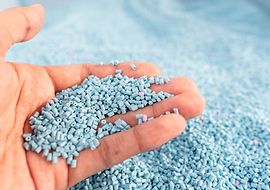Plastics

Here is a selection of various standards and specifications relevant to the Circular Economy.
Standards
 © black_kira / stock.adobe.com
© black_kira / stock.adobe.com
For a worldwide, (internet-based) trade in plastic waste and recyclates, uniform standards are needed that address all companies in the value chain in the Circular Economy: from product designers, plastics producers, plastics processors and product manufacturers/OEMs to waste producers, disposers and recyclers. The overall objective is to remedy the dysfunctionality of the recyclate markets with the means of digitalization by digitally tracing and improving the circularity of plastics from the point of production in the technical (and possibly biological) cycle.
To this end, DIN SPEC 91446 "Standards for trading (via digital platforms) and processing plastic waste feedstock and recyclates" is intended to set reliable and verifiable standards for
- the clear classification of plastic waste according to material flow and degree of circularity (post-consumer, post-industrial/pre-consumer, post-commercial etc.);
- (minimum) qualities depending on the application of the recyclate ("quality bands"), if necessary and possible;
- the labelling of recyclate content and type in regranulates and compounds;
- the processes of handling plastic waste and recyclates (collection, sampling, processing, etc.).
DIN EN 15347 “Plastics - Recycled Plastics - Characterization of plastics wastes“ provides a scheme for the characterization of plastic waste, outlining those properties for which the supplier of the waste must make information available to the purchaser and, where appropriate, specify test methods for their identification. The scheme provides for a distinction of information between "Required Data", for which an indication is required even if it is "Unclassified", and additional "Voluntary Data", which the supplier may choose to provide if this adds value to the waste.
DIN EN 15342, DIN EN 15344, DIN EN 15345, DIN EN 15346 and DIN EN 15348 “Plastics - Recycled Plastics - Characterization of ... recyclates“ establish procedures for the determination of the properties of
- Polystyrene (PS) recyclates
- Polyethylene (PE) recyclates
- Polypropylene (PP) recyclates
- Polyvinylchloride (PVC) recyclates
- Poly(ethylene terephthalate) (PET) recyclates
These European Standards list the most important properties and the associated test methods for the evaluation of recyclates intended for the production of semi-finished/finished products.
The draft European Standard E DIN EN 17410: 2019-07, "Plastics - Controlled loop recycling of PVC-U profiles from windows and doors" specifies the quality and test methods for recycled PVC to be used in PVC window profile systems. This draft contains a description of the regulated cycle as such, the definition of the material transformation steps relevant for the product quality, in particular the recycling input and output, as well as the input and output of the profile manufacture. Traceability tools are defined to characterize this cycle as a regulated cycle.
Individual recycling processes have been introduced for a wide range of plastic products. PVC windows and doors made of unplasticized PVC are subject to an advanced recycling process, i.e. a regulated cycle. In this particular case, the used windows are collected and the PVC frame is separated, crushed and treated. The recyclate obtained from this is then returned to the production of new window profiles. In order to ensure a high quality level of both plastic recycling and end products in a single market, it is recommended to standardize the control of the recycling process in terms of process steps, such as collection, identification, sorting, cleaning, and sub-process steps, such as quality assurance testing and traceability.
In this respect, this standard, together with DIN EN 12608-1 "Unplasticized poly(vinyl chloride) (PVC-U) profiles for the fabrication of windows and doors - Classification, requirements and test methods - Part 1: Non-coated PVC-U profiles with light coloured surface" and DIN EN 14351-1 "Windows and doors - Product standard, performance characteristics - Part 1: Windows and external pedestrian doorsets", forms a unique and consistent standardization framework that allows the value chain to function like a circle.
The European Standard DIN EN 15343:2008-02 "Plastics - Recycled Plastics - Plastics recycling traceability and assessment of conformity and recycled content” specifies the required procedures for the traceability of recycled plastics. It forms the basis for the calculation of the recyclate content. The purpose of this standard is to describe the necessary procedures for mechanical recycling of products made wholly or partly from recycled plastics and requiring evidence of traceability. It will enable manufacturers to use the recycled materials with full confidence and will ensure acceptance of the materials by end users.